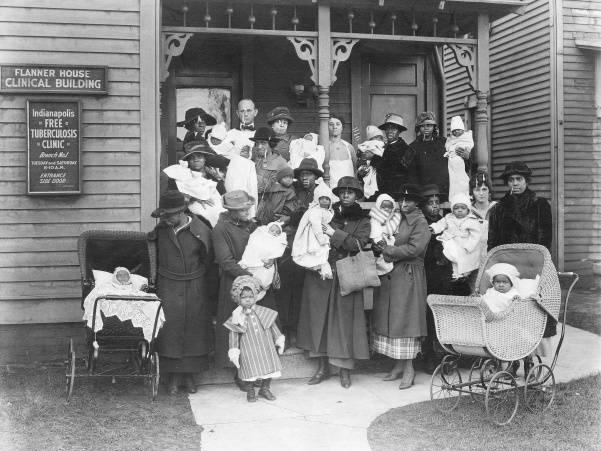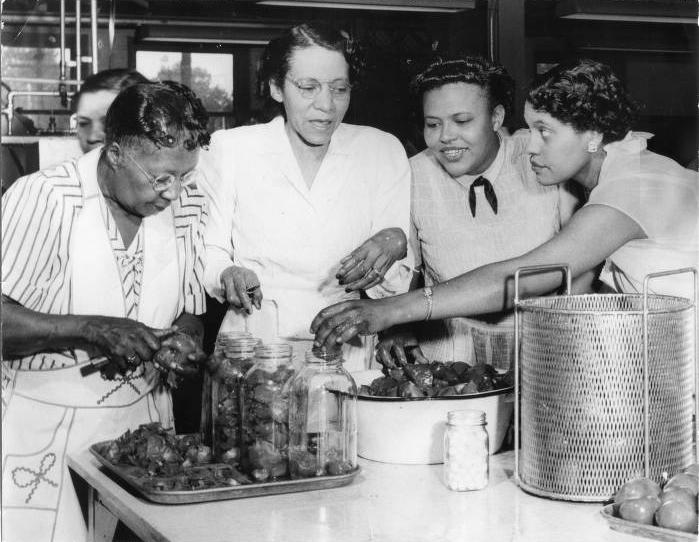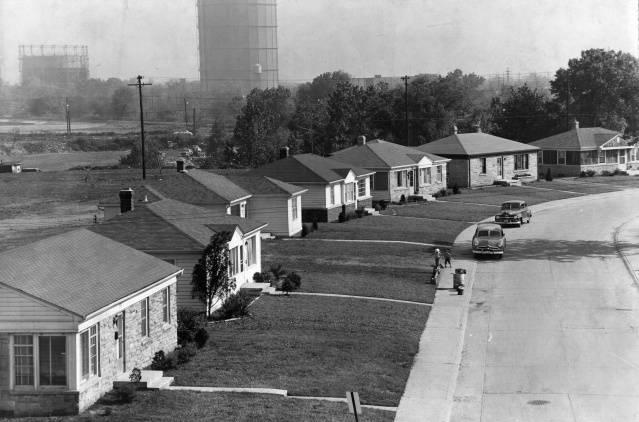Flanner House, originally an African American branch of a white settlement house organized by the Charity Organization Society, began as the Flanner Guild in a cottage that donated for the use of Black children in 1898. Meager funding limited most early programs to self-help efforts featuring lectures and classes by local volunteers. Activities included a rescue home for unwed mothers, domestic training classes in topics such as millinery and cooking skills, and a day nursery.

The Christian Women’s Board of Missions took over the funding and administration of the organization in 1911. Following the death of Flanner in February 1912, the Board changed the name from Flanner Guild to Flanner House and, in 1918, moved the institution to 802-814 North West Street. Under Charles O. Lee’s direction, the new settlement facilities soon housed a tuberculosis clinic and other health programs. A larger budget, increasingly from the Indianapolis , allowed Flanner House to increase its efforts to train and employ domestics and provide other self-help classes.
In 1936, Flanner House hired as director. Under Blackburn’s guidance, Flanner targeted key community issues, many of which the 1939 Indianapolis Study, the first analysis of the city’s Black population funded with a grant from the , revealed and made concrete. The study provided a complete “survey of the financial, educational, cultural, and medical” situation of the Indianapolis Black population.

By 1944, Blackburn had built a new headquarters at 333 West 16th Street, to house a cannery, workshop, and health center, reorganized the staff into five divisions, and greatly increased the budget. Flanner House continued to hold a variety of social service classes, group meetings, employment services, vocational training, health services, and a day nursery. New self-help activities included cannery use, family gardening, cooperative ventures, work camps, and a furniture and home-building program.
The success of the cooperatively built Flanner House Homes in the 1950s and 1960s gave the settlement national recognition. Between 1950 and 1964, Flanner House built more than 330 homes with the families it brought into the project. The program, however, has since met with criticism. It did not break through the boundaries of segregated housing in Indianapolis as all of the homes constructed were in areas that African Americans already inhabited. Flanner House Homes also improved housing quality for middle-income African American families who were accepted into the program rather than for low-income families. Although homeownership increased from 60.7 to 67.2 percent for whites between 1950 and 1960 when the Flanner House Home project was most active, it only increased from 44.2 to 44.9 percent for Blacks.

The attention that Flanner House Homes brought to the community center provided Blackburn with the opportunity to organize the Board for Fundamental Education as a social service think-tank to devise similar programs that could be tested at Flanner House and implemented nationally. Congress chartered this group in 1954, and it subsequently implemented many job training and educational programs.
Cleo Blackburn resigned in 1975, and Flanner House moved to 2110 North Illinois, leaving behind the health center and the canning facilities. The institution moved to its 2424 Dr. Martin Luther King, Jr. Street location in 1979, where it included a branch of the Indianapolis Public Library. In the 1970s and 1980s, Flanner House added programs that focused on the needs of its community, including assistance for homebound senior citizens and a residential youth center. In 1987, it joined with the consolidated Community Centers of Indianapolis (CCI).

By the 1990s, Flanner House was a multiservice center that administered federal and state welfare programs, and conducted its own senior citizen, youth, and daycare programs. It ran a short-lived charter high school called Flanner House Higher Learning Center from 2003-2006 and Flanner House Elementary from 2002-2014.
The Flanner House Branch of the Indianapolis Public Library closed in 2018 after a large, new branch opened at 6201 Michigan Road. In 2017, Flanner House opened Flanner Farm, an urban farm opened in conjunction with Brandywine Creek Farms that aimed to help improve access to fresh food in the city’s largest food desert. Cleo’s Bodega, a grocery and café that sells produce from Flanner Farm as well as from other local farms, opened in 2019.


Help improve this entry
Contribute information, offer corrections, suggest images.
You can also recommend new entries related to this topic.